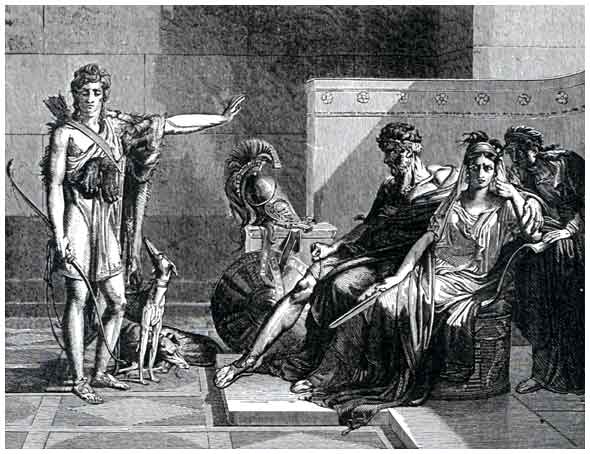 |
 |
 |
|
|

Hippolytus Protesting His Innocence
From the painting by Pierre Guerin.
|
...introduction continued; The same can hardly be said for another picture by which Guerin is known, and which we copy, the "Hippolytus protesting his Innocence," a subject drawn from the Hippolytus of Euripides, or rather from the play of Racine; a tragedy akin to that of the Hebrew Joseph, or of his English namesake in Fielding's novel, or, as M. Sensier has shown in his Life of J.-F. Millet, with its counterpart in real life. In Guerin's picture, the unhappy Hippolytus appears to the full as much of a prig as he does in the Greek play, while the attitudes and expression of the three other persons of the drama, Theseus, Phedra, and the nurse, are no nearer to nature than we should expect to find upon the stage. A more pleasing subject chosen by Guerin was his "Dido listening to the Adventures of Aeneas." This is one of the most to be commended of all the pictures of the time of David, those of the master himself included, for beauty of composition, grace of line, and story-telling power. Guerin was made director of the French Academy in Rome, and as a teacher of his art was very successful, second only in this respect to David himself. He shared with David the gift that distinguishes the true teacher: the power to develop in his pupils the qualities with which they are endowed by nature. Among others less famous, who came under Guerin's influence, we find the names of Gericault, Delaroche, Delacroix and Ary Scheffer, so that his studio became - strange as it may appear, when his own work is considered - the very nest and breeding-place of the Romantic school. continued... |